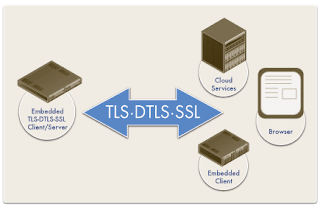Moving the Web from TCP to UDP
Networks
are increasingly reliable today and
maybe there are features of the TCP protocol that they are no
longer useful. At the beginning, UDP could
only be used by fast, streaming and real time applications where it
doesn't matter to loss packets. However, reliable networks, like we
have today, can also use the UDP protocol to transmit data over
Internet for applications other than fast,
streaming or real time where we even can't
loss any packets. How can we use the UDP
protocol to transmit data over the Internet in a reliable way? We
have discuss in this blog about how to accelerate applications with
HTTP/2
and Multipath
TCP, but this time we are going to
talk about the new experimental transport layer protocol called
QUIC
and developed by
Google in 2012.
Every
network engineer knows that a TCP connection has to perform a 3-way
handshake, which means three packets have to be transmitted to start
to send data packets. In addtion, if we want to encrypt the
communication, we need to negotiate TLS, which means more packtes
have to be transmitted before sending data packets. Obviously, 3-way
handshake and TLS negotiation spend time to make a connection.
Although, TCP
Fast Open (TFO) was developed to
improve the establishment, it isn't widely adopted yet. Therefore,
the QUIC protocol is beyond TFO because it can start a connection and
negotiate all the TLS parameters in one or two packtes, and what's
more, Google is behind this project.
 |
| Zero RTT Connection Establishment |
How
does the Internet stack look like? As we can see in the next image,
QUIC replaces TLS and a little bit of the HTTP/2 protocol, and it is
over the UDP transport protocol.
QUIC replaces TLS because it can make the
crypto handshake, and QUIC replaces a
little bit of HTTP/2 because it can make multiplexing and connection
management which was usually done by HTTP. QUIC
works over the UDP protocol, thus it implements congestion control
and loss recovery.
 |
| QUIC Stack Standardized |
One
of the advantages of QUIC is the multiplexing connection because
while in the TCP protocol we had to wait (buffered) each packet to
order it before giving it to the application layer, and if there are
missing packets we have to ask them for retransmision, the QUIC
protocol isn't dependent on the order in which packets are received
and if a packet is lost, it will only
impact to an individual resource and it doesn't need to retransmit
the entire connection.
 |
| Multiplexing |
Another
advantage of QUIC is the Multipath UDP. Due to the fact we don't have
to establish a TCP connection we, as clients, can transmit data over
different networks and technologies at the same time incrising
bandwidth and availability as we have with Multipath TCP.
 |
| Multipath UDP |
Another
advantage of QUIC is the Forward Error Correction (FEC) feature which
is something like a RAID 5 in datastores because QUIC can send
redundant data in each packet to prevent
retransmision when a packet is lost.
 |
| Forward Error Correction |
How
does QUIC work? As we can see in the next pictures, the first one is
from a TCP connection which perform the 3-way handshake before the
Client Hello packet. However, in the second picture we can see, over
the UDP port 443, QUIC requests and responses, sending the Client
Hello packet from the beginning of the connection, which make QUIC
protocol faster than TCP establishment connections.
 |
| TCP Communication |
 |
| QUIC Communication |
We'll
see in the near future if QUIC is widely adopted but anyway what it
is a fact is the implementation of HTTP/2 along with SPDY, Multipath
and Multiplexing which are concepts and technologies that we have to
take into account when we deploy new services today. All of them
improve the content delivery and we should know how they work to
adapt our services
and networks to this new paradigm.
Regards my
friend and remember, drop a line with the first thing you're
thinking.









Gracias por compartir esta información.
RépondreSupprimer